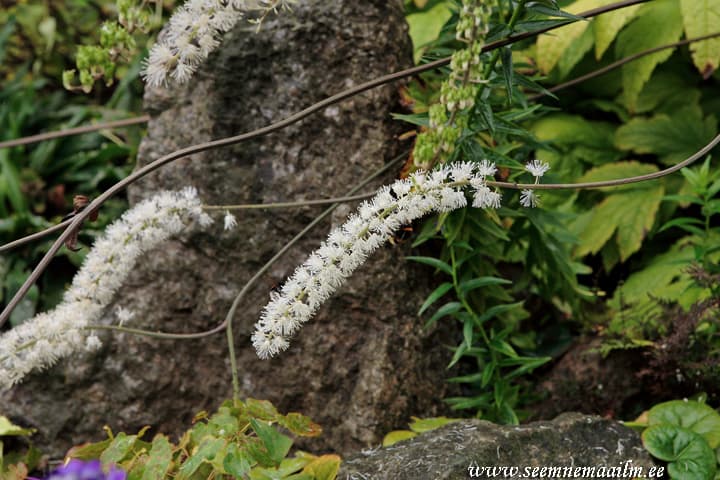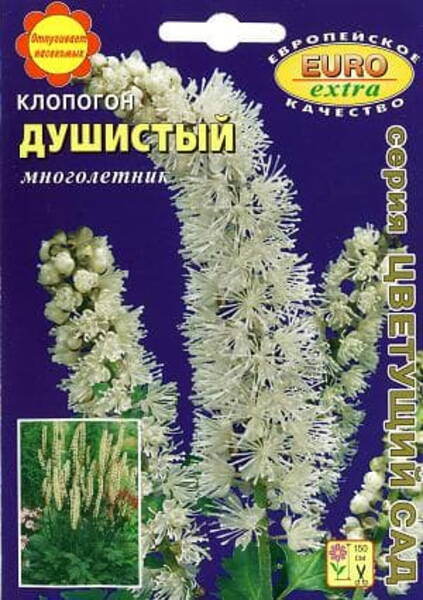Your shopping cart is empty!
Black Cohosh "DUSHISTY"
Black Bugbane - Cimicifuga racemosa L.
The plant is perennial. Stems erect, branched, leafy, up to 200 cm tall. The bush grows up to 60 cm wide. The rhizome is highly developed, the roots are large, fibrous in large numbers. The leaves are large, petiolate, arranged in the next order, twice or thrice trifoliate, serrated along the edge. The flowers are white, small, with a honey smell, collected in long, racemose terminal inflorescences up to 80 cm long. Black cohosh blooms from July to September, the flowers in the inflorescence open gradually, from bottom to top. Fruiting. In culture since 1732.
Location: Sunny, sheltered from the wind, tolerate partial shade.
Soil: Prefers well-drained, fertile, moderately moist soil
Care: although the thin peduncles of black cohosh are distinguished by an enviable strength, they are not always able to resist in a strong wind or in a downpour, therefore, especially tall specimens, it is better to provide support. In order for the bushes to shine with freshness all season long, the soil under them is mulched to retain moisture, and in dry weather it is watered abundantly. Weeds under the canopy of powerful black cohosh leaves survive poorly and do not cause much trouble. Diseases and pests do not particularly annoy the plant.
The plant is perennial. Stems erect, branched, leafy, up to 200 cm tall. The bush grows up to 60 cm wide. The rhizome is highly developed, the roots are large, fibrous in large numbers. The leaves are large, petiolate, arranged in the next order, twice or thrice trifoliate, serrated along the edge. The flowers are white, small, with a honey smell, collected in long, racemose terminal inflorescences up to 80 cm long. Black cohosh blooms from July to September, the flowers in the inflorescence open gradually, from bottom to top. Fruiting. In culture since 1732.
Location: Sunny, sheltered from the wind, tolerate partial shade.
Soil: Prefers well-drained, fertile, moderately moist soil
Care: although the thin peduncles of black cohosh are distinguished by an enviable strength, they are not always able to resist in a strong wind or in a downpour, therefore, especially tall specimens, it is better to provide support. In order for the bushes to shine with freshness all season long, the soil under them is mulched to retain moisture, and in dry weather it is watered abundantly. Weeds under the canopy of powerful black cohosh leaves survive poorly and do not cause much trouble. Diseases and pests do not particularly annoy the plant.


Black Bugbane, Black Cohosh, Black Snakeroot. Bot. syn.: Actaea racemosa L., Cimicifuga serpentaria Pursh; Botrophis actaeoides Fisch. et C. A. Mey.












